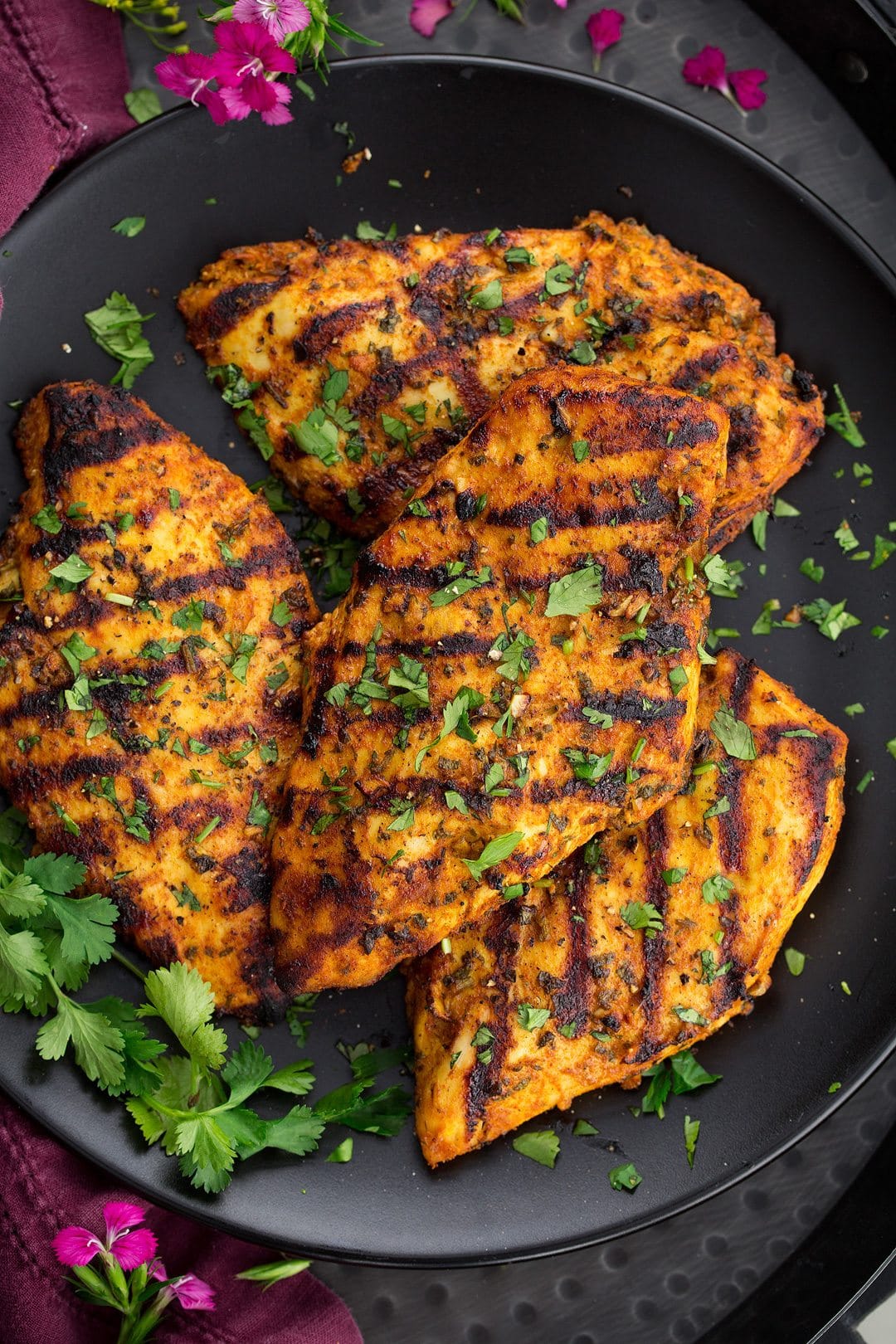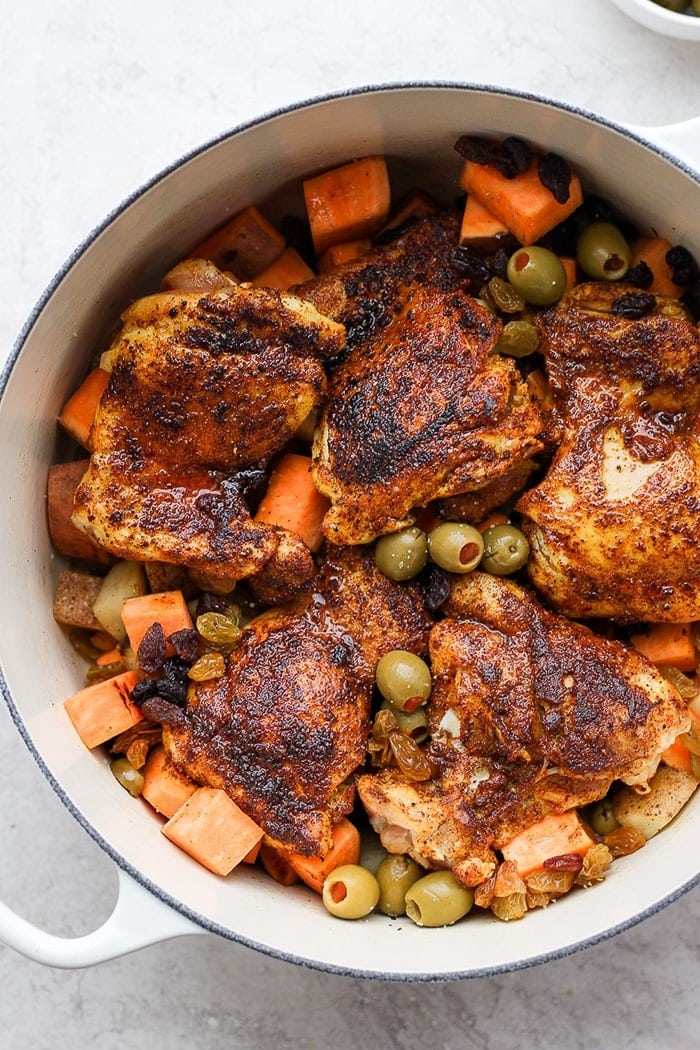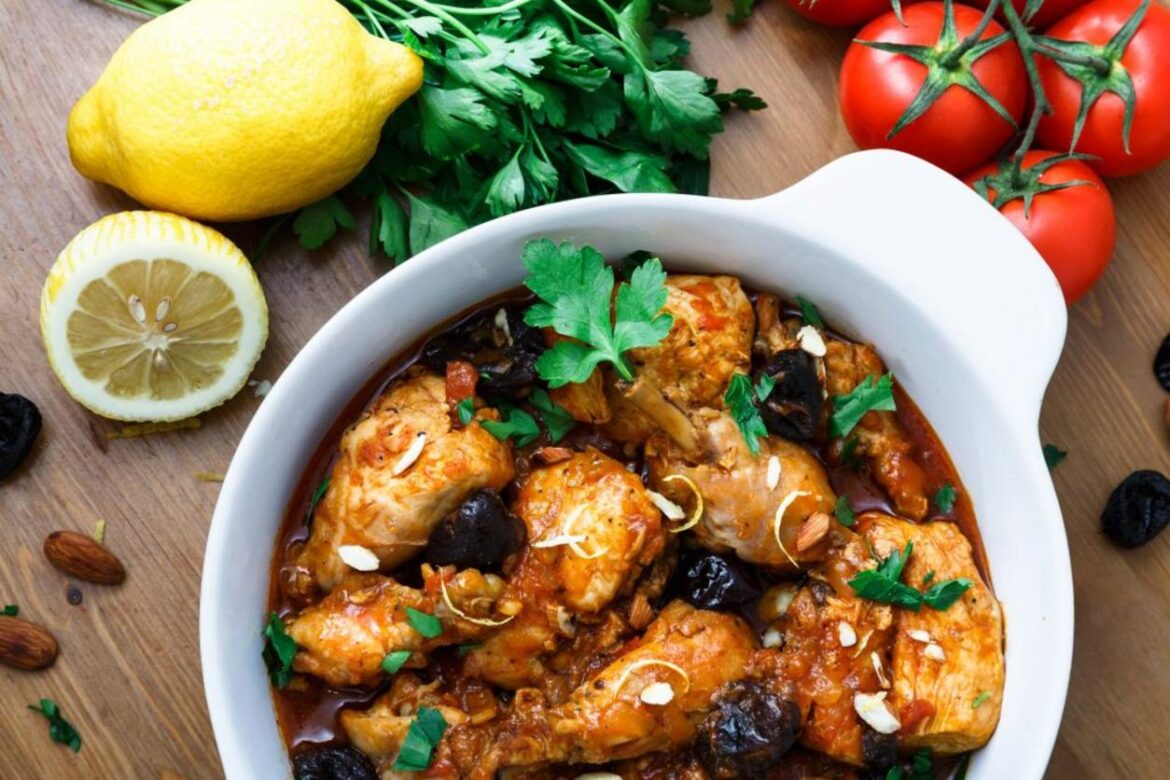Introduction: The Magic of Turmeric and Moroccan Spices
Turmeric – that vibrant, sunshine-yellow spice – has been revered for centuries, not just for its striking color but also for its remarkable health properties and intensely complex flavor. Originating in South Asia, turmeric has woven itself into the culinary traditions of countless cultures, particularly those of India, Morocco, and Southeast Asia. The spice’s magic lies primarily in curcumin, a potent polyphenol compound responsible for its characteristic hue and a vast array of benefits, including anti-inflammatory and antioxidant effects. Combining turmeric with the aromatic spices of Morocco – cumin, coriander, ginger, and paprika – creates a symphony of flavors that is both deeply savory and subtly sweet. The slow-cooked method, crucial to this recipe, allows these flavors to meld and intensify, transforming simple ingredients into a truly exceptional dish. Moroccan cuisine, in particular, thrives on layering flavors, building complexity through the careful use of spices and techniques like slow-braising. This approach is not simply about taste; it’s about creating a dish that engages all the senses, a testament to the rich heritage of the region. The slight bitterness of turmeric, when balanced with the warmth of cumin and the subtle heat of ginger, creates a depth of flavor that is both comforting and invigorating. Furthermore, turmeric’s staining properties are not accidental; they are a testament to its intense flavor and a beautiful reminder of the vibrant culinary tradition it represents. This recipe is an invitation to explore this tradition, to understand the power of spices, and to experience the transformative magic of turmeric. spices[] turmeric[] moroccan cuisine[] cumin[] coriander[] ginger[] paprika[] slow-braising[]
Grilled Moroccan Chicken: Marinating for Maximum Flavor
The secret to truly exceptional Moroccan-spiced chicken lies not just in the spices themselves, but in the transformative power of marination. Allowing the chicken to soak in a flavorful blend of aromatic ingredients for at least 30 minutes, and ideally up to 4 hours, is crucial. This extended contact time deeply penetrates the meat, breaking down tough fibers and infusing every morsel with the vibrant essence of the spices. The marinade isn’t just a collection of ingredients; it’s a process that unlocks the full potential of the dish.
Our recipe utilizes a potent blend designed to emulate the authentic Moroccan flavors – warm ginger, fragrant cumin, earthy turmeric, and a touch of chili for a subtle kick. spice blend The turmeric, in particular, is responsible for the signature golden hue and its powerful anti-inflammatory properties, adding a layer of depth beyond just the taste. The ginger, combined with the cumin, provides a comforting warmth, while the chili adds a delightful little surprise. ginger
To maximize the marinating effect, we recommend using chicken pieces that have a little bit of bone – bone-in chicken thighs or breasts work exceptionally well. The bone acts as a miniature heat source, accelerating the chemical reactions that tenderize the meat. Consider using a mix of chicken pieces; it creates a more complex taste and texture. chicken pieces
For an even deeper flavor infusion, we suggest using a portion of the marinade as a final basting sauce during the grilling process. This will not only add another layer of intense flavor but also help to keep the chicken incredibly juicy. marinade The marinade can be enhanced with a touch of honey or maple syrup for a slightly sweet and savory balance, or a squeeze of fresh lemon juice for brightness. lemon juice
Don’t be tempted to rush the marinating process. The longer the chicken soaks, the more intensely flavored it will become. A simple marinade recipe for this is: 2 tablespoons olive oil, 2 tablespoons lemon juice, 2 tablespoons honey, 2 teaspoons ground cumin, 1 teaspoon ground turmeric, ½ teaspoon ground ginger, ½ teaspoon chili powder, 1 clove minced garlic, 1/2 teaspoon salt and 1/4 teaspoon black pepper. olive oil Remember, patience is key to achieving truly exceptional Moroccan-spiced chicken. Proper marination is not just a step in the recipe – it’s the foundation of its incredible flavor.
Turmeric Rice: Building a Base of Vibrant Flavor
Turmeric rice forms the perfect foundation for this Moroccan-inspired dish, imbuing every grain with a beautiful golden hue and a subtle, earthy sweetness. The key to a truly exceptional turmeric rice lies in building its flavor gradually, allowing the spice to bloom and develop its full potential. Start by heating 1 tablespoon of ghee in a medium saucepan over medium heat. The ghee – a clarified butter prized for its rich, nutty flavor and high smoke point – is essential; it provides a depth of flavor that other oils simply can’t match. As the ghee melts, add 1 teaspoon of ground turmeric – approximately 1.5 – 2 teaspoons, depending on your desired shade of yellow – and ½ teaspoon of ground cumin. Stir constantly for about 30 seconds, allowing the spices to toast lightly; this step is crucial for releasing their essential oils and maximizing their aroma. Next, add 1 cup of basmati rice, rinsed thoroughly under cold water until the water runs clear – this removes excess starch, resulting in fluffier rice. Stir the rice into the spiced ghee and turmeric, ensuring every grain is coated. Pour in 1 ½ cups of chicken broth (low sodium is recommended) and a pinch of salt – roughly ¼ teaspoon. Bring the mixture to a rapid boil, then immediately reduce the heat to the lowest setting, cover the saucepan tightly with a tight-fitting lid, and simmer for 15 minutes. It’s vital not to lift the lid during this time; the steam is essential for cooking the rice perfectly. After 15 minutes, remove the saucepan from the heat and let it stand, covered, for another 10 minutes. This final resting period allows the rice to fully absorb any remaining moisture and achieve that desirable, slightly sticky texture. Fluff the rice gently with a fork before serving. For a richer flavor, consider adding a bay leaf during the simmering process – simply remove it before serving. A little bit of fresh cilantro , chopped finely, can be stirred in at the very end for a burst of freshness, offering a lovely contrast to the warm spices. Finally, a small knob of butter (about 1 tablespoon) added after fluffing will ensure a glistening, perfectly textured result. This rice isn’t just a side dish; it’s the heart of the experience, delivering that signature Moroccan flavor profile.
Turmeric Cauliflower Rice: A Healthy and Delicious Variation
Turmeric cauliflower rice offers a fantastic way to enjoy the vibrant flavors of this recipe with a significantly lighter and healthier twist. Traditional rice can be quite starchy, but cauliflower rice provides a remarkably low-carb option, making it a brilliant choice for those mindful of their carbohydrate intake or exploring ketogenic diets. Beyond its health benefits, the subtle sweetness of cauliflower complements the warm spices beautifully, creating a harmonious flavor profile. The preparation is equally straightforward – simply sauté the cauliflower rice with the same aromatic spices used for the traditional rice, and the addition of chicken broth elevates the overall taste. Cauliflower is naturally packed with vitamins C and K, as well as fiber, promoting digestive health and boosting your immune system. Furthermore, substituting cauliflower rice for regular rice is an excellent strategy for reducing your overall calorie count, without sacrificing the rich and satisfying taste of the dish. You can easily add a handful of chopped cilantro at the end for a burst of freshness and additional nutritional benefits. Cilantro adds a bright, herbaceous note that perfectly balances the spices. Consider adding a squeeze of lemon juice – lemon juice – for a zingy finish that amplifies the flavor. The preparation process itself is quick and simple: the cauliflower rice cooks in just a few minutes, making it a speedy weeknight meal. To maximize the flavor, be generous with the spices! The combination of turmeric, cumin, coriander, and ginger creates a wonderfully aromatic and deeply satisfying experience. For an added textural element, consider adding some toasted slivered almonds – almonds – just before serving. This simple swap makes the entire meal feel lighter, more nutritious, and incredibly delicious. You’ll find yourself reaching for this healthier version time and time again. To add some depth of flavor, consider incorporating a touch of coconut milk – coconut milk – during the sautéing process. It adds a subtle sweetness and creaminess that beautifully complements the spices. This ingredient enhances the richness of the dish without adding excessive calories or carbs. Finally, experiment with other additions – perhaps some chopped bell peppers or zucchini – to further customize the dish to your liking. This versatile ingredient opens up a world of culinary possibilities! Cauliflower is truly the star of this variation, delivering a delicious and guilt-free experience.
Serving Suggestions and Final Notes
This Turmeric-infused Moroccan Chicken with Rice and Cauliflower Rice is a truly versatile dish, perfect for a weeknight dinner or a flavorful gathering with friends. Beyond the initial vibrant flavors, there are several ways to elevate the experience and tailor it to your preferences. First, consider the spices – the blend of cumin, turmeric, coriander, ginger, and cinnamon creates a warm and exotic foundation, but don’t be afraid to adjust the proportions to your liking. If you enjoy a bolder flavor, add a pinch more cumin or coriander. For a sweeter profile, a tiny drizzle of honey or maple syrup after cooking can beautifully complement the spices. sweetener
Serving suggestions are plentiful. Traditionally, Moroccan cuisine is often served with a cooling yogurt sauce, like a simple cucumber-mint yogurt, to balance the richness of the chicken. Alternatively, a warm pita bread would be fantastic for scooping up the rice and chicken juices. pita bread Garnishing with chopped fresh cilantro or parsley after serving adds a pop of freshness and visual appeal. fresh herbs Another fantastic addition would be toasted almonds or pistachios – their crunch provides a textural contrast to the tender chicken and fluffy rice. nutty topping
For the cauliflower rice version, don’t hesitate to experiment with vegetables! Diced bell peppers, zucchini, or even chopped spinach would all work beautifully, adding extra nutrients and flavor complexity. vegetable additions
Finally, this dish pairs exceptionally well with a crisp, dry white wine, like a Sauvignon Blanc or Pinot Grigio. wine pairings or a light rosé. Leftovers are even more delicious the next day – the flavors meld together even further, creating an even richer taste. Store the chicken and rice in an airtight container in the refrigerator for up to 3-4 days. To reheat, add a splash of broth or water to prevent it from drying out. This recipe is incredibly adaptable, so feel free to make it your own and create a dish that perfectly suits your palate. It’s a wonderful introduction to the magic of turmeric and Moroccan spices, and we encourage you to explore further into the world of flavorful cuisines. more recipes Don’t forget to share your creations with us – tag us on social media using #TurmericMoroccanChicken.
 ,
, ,
,
